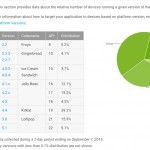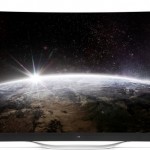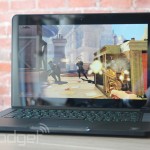Equifax breach may have exposed more data than first thought
The 2017 Equifax data breach was already extremely serious by itself, but there are hints it was somehow worse. CNN has learned that Equifax told the US Senate Banking Committee that more data may have been exposed than initially determined. The hack may have compromised more driver's license info, such as the issuing data and host state, as well as tax IDs. In theory, it would be that much easier for intruders to commit fraud. The breach compromised about 145.5 million people, although their level of exposure varied wildly. About 10.9 million Americans' driver's licenses were embroiled in the hack, and just a small fraction of the exposed UK licenses (just under 700, 000) had enough info to jeopardize the victims' privacy. Equifax stressed to CNN that the initial list of exposed data was never meant to be the final, definitive account of the scope of the problem. And that's not unheard of -- companies frequently deliver rough assessments of the damage in the immediate aftermath and refine the numbers as they learn more. However, that explanation might not be enough for officials. Senators are already clamoring for a thorough investigation , and want to know the full extent of what happened. This update gives them more of what they want, but it also raises the question of why the company is still determining the scope of the breach nearly half a year after it was made public. Source: CNN Money
56,000 Layoffs and Counting: India’s IT Bloodbath This Year May Just Be the Start
An anonymous reader quotes a report from Quartz: For Indian techies, 2017 was the stuff of nightmares. One of the top employment generators until a few years ago, India's $160 billion IT industry laid off more than 56, 000 employees this year. Some analysts believe this spree was worse than the one during the 2008 financial crisis. Meanwhile, hiring plummeted, with entry-level openings having more than halved in 2017, according to experts. Tata Consultancy Services (TCS) and Infosys, two of India's largest IT companies and once leaders in job creation, reduced their headcounts for the first time ever. Even mid-sized players like Tech Mahindra retrenched several employees. Compared to the normal rate of forced attrition (i.e. asking non-performers to leave) of around 1% in earlier years, 2017 saw Indian IT companies letting go of between 2% and 6% of their employees, said Alka Dhingra, general manager of IT staffing at TeamLease Services. Infosys cut 9, 000 jobs in January. "Instead of 10 people, what if we have three people to work on (a project). If we don't have the software, then some others will take the advantage (away from us), " Vishal Sikka, the former CEO of the Bengaluru-based company, said in February. Meanwhile, around 6, 000 Indian employees at Cognizant reportedly lost their jobs to automation. Read more of this story at Slashdot.
Italian cryptocurrency exchange BitGrail loses $170 million
One of the biggest problems with cryptocurrency exchanges is that they're a juicy, enticing target for high-tech criminals. Case in point, Italian exchange BitGrail, which lost $170 million worth of Nano tokens, a little-known digital coin previously called RaiBlocks. BitGrail is the second exchange that lost of massive amount of money this year -- and it's only February -- following Tokyo-based Coincheck, which lost between $400 and $534 million worth of coins in a cyberattack on its internet-connected wallet back in January. BitGrail announced on its website that it lost $170 million to fraudulent transactions and that it has already reported them to authorities. It has suspended all withdrawals and deposits "in order to conduct further verifications." However, unlike Coincheck, which promised to give users their money back, BitGrail founder Francesco "The Bomber" Firano announced on Twitter that there's no way to refund 100 percent of what users lost. While BitGrail's loss is in no way as massive as Mt. Gox's , it's still steeped in controversy. The Nano team said that they have no "reason to believe the loss was due to an issue in the Nano protocol" and that the "problems appear to be related to BitGrail's software." They also published a copy of their conversation with the exchange's founder and said that Franceso suggested they modify the ledger to cover his losses. It doesn't help that BitGrail recently required users to verify their accounts to be able to withdraw their coins beyond a certain amount, and some people have reportedly been waiting for verification since December. More recently, the exchange announced that it would no longer serve non-EU users due to what it said are legal complications. Team Nano wrote in their latest statement: "We now have sufficient reason to believe that Firano has been misleading the Nano Core Team and the community regarding the solvency of the BitGrail exchange for a significant period of time." On Twitter, Francesco said Nano's claims are nothing but "unfounded allegations." He added that he told the police that the Nano team published their private convo, which could compromise the investigation. In the wake of the unfounded accusations made against me by the dev team and of the dissemination of private conversations that compromise police investigations, Bitgrail s.r.l. is forced to contact the police in order to protect its rights and users — Francesco The Bomber (@bomberfrancy) February 10, 2018 NANO on BitGrail have been stolen. Unfortunately there is no way to give it back to you at 100% (we only got 4 MLN XRN right now). The devs, as you have guessed, dont want to collaborate — Francesco The Bomber (@bomberfrancy) February 9, 2018 Source: The Wall Street Journal
Razer Blade review (2014): a ‘no-comprimise’ premium gaming laptop
More often than not, I feel like my feedback -- both as a customer and a writer -- vanishes into a collapsing singularity of customer service. And yet, I've never felt this way about Razer. When the company launched the original Blade gaming laptop , it was panned for being underpowered, so the company replaced it in the same calendar year . When that second-generation machine was written up for being too short-lived, a smaller machine with exceptional battery life hit the market. That machine was judged for having a middling screen, and so Razer answered its critics again, this time with the fourth-generation Razer Blade, a machine that brings more power, more features and a significantly better display . So, does it answer my biggest complaints? Let's find out. Look and feel Unpacking Razer's latest gaming laptop gives me some serious déjà vu: This newest model echoes the form, design and packaging of last year's model, even down to the smallest details. Everything here is familiar; its aluminum hull and meager port selection (three USB connections and HDMI-out) haven't changed at all. For a moment there, I was worried -- has Razer's notebook team grown complacent? Is the Blade slipping into a pattern of iterative hardware refreshes? No, thankfully; not just yet. There are notable changes here. They're just fairly subtle. Still, my first impression wasn't wrong: This is the same thin chassis Razer designed last year -- it has the same keyboard, flanked by the same stereo speakers and headlined by the same black power button. The aforementioned ports are accompanied only by an AC plug and an audio jack. It's refreshingly simple and elegant -- kind of like a MacBook Pro draped in black with green keyboard backlighting. It's so lovely, in fact, that I almost didn't notice the notebook's one visual refinement: the reflective glass surface of the new touchscreen display. It seems like a small change, but it makes a difference: The Blade's touch panel makes the new model's lid just a hair thicker than last year's version, increasing the laptop's overall girth to 0.7 inch. It's still gloriously thin, but it's no longer slimmer than the MacBook Air at its thickest point -- rendering my favorite bit of Razer trivia sadly obsolete. The machine has put on a little weight too: It now tips the scales at 4.47 pounds. Even so, these changes are minor; the Blade is still the best-looking gaming laptop on the market. A marginally thicker waist and a slightly heavier frame don't change that. Keyboard and trackpad The Razer Blade's 80-button keyboard serves as a reminder of what Razer used to be. Before it started making lighted key interfaces, gaming laptops and overpowered tablets, the company was known for building PC gaming peripherals , and that history shows. The chiclet keyboard is a joy to type on, with firm keys that depress with a light click and just the right amount of downward travel. It also boasts niche features like anti-ghosting, and has fully programmable, macro-ready keys. That said, it's not quite perfect -- the keyboard still lacks a hotkey to disable the Windows button (though this can be accomplished through Razer's Synapse software). Although the touchpad hasn't undergone any physical changes since last year, it seems to perform a little better. It's still a large, smooth surface with a pair of quiet, if slightly mushy buttons, but it handles Windows 8 gestures better than the 2013 model did. That trackpad, if you'll recall, had an occasional tendency to zoom while scrolling -- an issue I never encountered with Razer's latest system. It's a good mouser, but I'm still not completely sold on its left and right clickers. They do the job, but their quiet depressions just feel out of sync with the satisfying clicks of the keyboard. Display and sound As much as we loved Razer's previous Blade laptops, they all fell short in the display department. Middling screens with poor viewing angles and low resolutions (specifically in the 14-inch Blade and Razer's Edge tablet ) were the standard -- they got the job done, but they were nothing special. Finally, that's changing: The new 14-inch Razer Blade features a bright, 400-nit, 3, 200 x 1, 800 panel. It's a gorgeous answer to its predecessor, with bright colors, wide viewing angles and a resolution befitting a high-performance gaming rig. At worst, it loses a little brightness when you view it from off-center, but its colors don't run until you gaze at it from extreme, impractical angles. Games and high-resolution content look stunning on the screen, of course, but it forces yet another comparison between Razer and Apple. Specifically, I mean Cupertino's MacBook Pro with Retina display: The Blade's new panel is excellent (it's true), but not everything scales well. Programs like Origin insist on displaying text, icons and windows optimized for a 1080p display, making them appear miniscule at the Blade's default resolution. Similarly, games configured to run at 1080p will be displayed in a large, black border unless the Blade's desktop resolution is dialed down to match. While this isn't a hard task to accomplish, it makes running games on the laptop a little less user-friendly; I found I had to be far more mindful of game and display settings than usual. The Blade's new panel is also a touchscreen, a feature that initially took me off guard. I couldn't help but wonder if it was included as a compromise for the Blade's orphaned Switchblade interface. Razer CEO Min-Liang Tan tells me it's just the opposite. "We set out to design a truly no-compromise product, " he said. "Windows 8 was designed with a touchscreen in mind." It's true; the Windows 8 Start Screen fares much better under the tip of a finger than the pointer of a mouse. Still, Tan admitted that touchscreens aren't for everyone, joking that Razer happens to make plenty of gaming mice , too. It's hard to find fault with the Blade's speakers. Sitting on either side of the machine's keyboard, they offer loud, clear and well-separated stereo sound. They don't pump out a particularly rich sound, but they don't come off as cheap or tinny, either. Naturally, a proper gaming headset will trump any embedded speaker, but the Blade's stereo drivers sounded fine to me. Average, perhaps -- but fine. Performance, battery life and software PCMark7 PCMark Vantage 3DMark06 3DMark11 ATTO (top disk speeds) Razer Blade 14-inch (2.2GHz Core i7-4702HQ, NVIDIA GTX 870M 3GB) 5, 664 19, 994 24, 255 E9, 533 / P6, 541 / X2, 236 542 MB/s (reads); 257 MB/s (writes) MSI GS60 Ghost (2.4GHz Core i7-4700HQ, NVIDIA GTX 860M 2GB) 5, 909 22, 602 22, 898 E7, 908, / P5, 152 / X1, 519 537 MB/s (reads); 495 MB/s (writes) Alienware 14 (2.4GHz Core i7-4700MQ, NVIDIA GTX 765M 2GB) 5, 310 21, 502 20, 868 E6, 529 / P4, 211 507 MB/s (reads); 418 MB/s (writes) Alienware 17 (2.7GHz Core i7-4800MQ, NVIDIA GeForce GTX 780M 4GB) 5, 647 22, 114 27, 137 E10, 638 / P7, 246 509 MB/s (reads); 420 MB/s (writes) Digital Storm Veloce (2.7GHz Core i7-4800MQ, GeForce GTX 765M 2GB) 6, 107 21, 379 20, 340 E6, 696 / P4, 353 506 MB/s (reads); 196 MB/s (writes) 2013 Razer Blade 14-inch (2.2GHz Core i7-4702HQ, GeForce GTX 765M) 5, 837 19, 505 19, 815 E6, 364 / P4, 161 546 MB/s (reads); 253 MB/s (writes) MSI GT70 Dragon Edition (2013) (2.4GHz Core i7-4700MQ, GeForce GTX 780M) 6, 111 20, 250 N/A E10, 519 / P7, 416 1.19 GB/s (reads); 806 MB/s (writes) Razer Edge Pro (1.9GHz Core i7-3517U, NVIDIA GT 640M LE 2GB) 4, 949 13, 536 10, 260 E2, 507 / P1, 576 409 MB/s (reads); 496 MB/s (writes) Samsung Series 7 Gamer (2.30GHz Core i7-3610QM, GeForce GTX 675M) N/A 11, 515 21, 131 N/A N/A Last year, Razer reined in the Blade's performance by anchoring it to a mediocre, low-resolution display. It was a practical move that created an intentional bottleneck -- if games can't run at higher resolutions, they aren't likely to outpace the machine's GPU. The 2014 Blade has no such limitations; its 3, 200 x 1, 800 panel leapfrogs the display capabilities of most gaming portables, leaving the user to choose just how far they want to push their in-game settings. It's a welcome change, but it's not necessarily a user-friendly one. Razer Blade owners now have to consider their in-game settings more carefully than ever. In an ideal situation, most PC gamers would want to run their favorite titles at the maximum configurable visual settings at their monitor's native resolution -- a challenging proposition on all but the most powerful gaming rigs. The new Blade has plenty of power, of course -- a 2.2GHz Intel Core i7-4702HQ CPU, 8GB of DDR3L RAM and NVIDIA GeForce GTX 870M graphics -- but its enormous display resolution stretches even those internals to their limit. Tuned to ultra or very high-quality settings, most games stuttered at 3, 200 x 1, 800. Battlefield 4, The Witcher 2, Thief and Crysis 3 all struggled to break 15-20 fps in our tests, reaching playable frame rates only after I downgraded the settings ( BF4 managed 36 fps on high, for instance, and a strong 50 fps on medium). Although some games took to the ultra-high resolution naturally ( BioShock Infinite , The Elder Scrolls V: Skyrim and Dark Souls II averaged 32, 30 and 40 fps on maximum settings, respectively), reducing the resolution produces more consistently impressive results. At 1, 920 x 1, 080, the Blade can handle almost anything. Battlefield 4 bounced between 54 fps and 45 fps on maximum settings, depending on the map, with Thief and The Witcher 2 seeing similar gains to 40 fps and 50 fps, respectively. Crysis 3 stubbornly refused to break 30 fps at its highest visual settings, but managed to hit 40 fps when I stepped down to the second-best configuration. Games that tolerated the laptop's native display size fared even better, boasting frame rates in excess of 60, sometimes 70, frames per second. Still, many titles wouldn't run at full screen in 1080p unless I scaled down the Blade's desktop resolution. It's a minor inconvenience, but it can be irritating if you prefer the panel's native resolution for general use. Battery life Razer Blade (2014) 4:27 Razer Blade 14-inch 6:24 MSI GT70 Dragon Edition 4:34 Razer Edge Pro 3:40 Razer Blade 2.0 3:29 MSI GS60 Ghost 3:13 Alienware 14 3:07 Alienware 17 2:55 Digital Storm Veloce 2:53 MSI GT70 2:49 MSI GT683DXR 2:40 Samsung Series 7 Gamer 2:11 2011 Sony VAIO F Series 2:07 Qosmio X775-3DV78 1:26 While the Blade's internals didn't leave me wanting for power, its screaming performance comes at a price: battery life. Our standard rundown test exhausted the machine after four hours and 27 minutes -- a respectable runtime for a gaming laptop, but still a solid two hours short of last year's model. It's understandable, I suppose -- Haswell giveth and Haswell (or perhaps the Blade's gorgeous display panel) taketh away. Still, it's always sad to see a machine lose longevity from one year to the next. Oh, and that power generates a fair bit of heat, too: The area just above the keyboard and part of the machine's underside can get quite hot during gaming sessions. Keep your pants on, literally, or risk burning your legs. The Razer Blade is traditionally lightweight on pre-installed software, and the latest iteration is no exception. A freshly unpacked Blade is outfitted with little more than Windows 8.1, a handful of drivers and Razer's own Synapse software -- a device, backlight and keyboard macro manager. It's almost nothing, and that's perfectly fine. Configuration options and the competition When the Blade first hit the scene in 2012, it was expensive -- almost prohibitively so -- but Razer kept knocking down the price with each successive release. That trend seems to be over -- this year's Blade costs $400 more than its predecessor, regardless of configuration. It's pricey, but also powerful: Our $2, 400 review unit is kitted out with a 2.2GHz Intel Core i7-4702HQ processor (3.2GHz with Turbo Boost), 8GB of DDR3L-1600MHz RAM, NVIDIA GeForce GTX 870M graphics (3GB GDDR5 VRAM), a 256GB solid-state drive and a 14-inch, 3, 200 x 1, 800 QHD+ multitouch display. Customization begins and ends with the machine's SSD -- it can be doubled for $300 or halved, a move that shaves $200 off the price. Razer does offer a larger Blade too, but it's not quite the same machine. The 17-inch Blade Pro starts at $2, 300, and features a 2.4GHz/3.4GHz Intel Core i7-4700HQ CPU, 16GB of DDR3L RAM and an NVIDIA GeForce GTX 860M GPU (2GB of GDDR5 VRAM). It also boasts Razer's unique Switchblade interface -- a collection of programmable keys, each with their own embedded LED display. Its display panel isn't a touchscreen like the 14-inch model's screen, but it's a good choice for buyers intimidated by higher resolutions: It tops out at 1080p. Most of the Blade's competition comes in the form of larger, but less expensive systems -- but if your heart is set on a thin machine, take a look at MSI's GS60 Ghost . This machine isn't quite as thin as the new Razer Blade, but it matches the Blade Pro's internal components part for part, and then some. In addition to all the above specs, the Ghost boasts a 1TB HDD for storage and a lower price of $1, 800. Wrap-up Razer CEO Min-Liang Tan describes the 2014 Razer Blade as a "no-compromise" gaming laptop, and that's almost accurate. Between the machine's screaming graphics performance, its thin chassis and that new QHD+ touchscreen, I was hard-pressed to find a legitimate complaint. Even so, the shadow of compromise is indeed here. The 14-inch Blade's enhancements undo one of the previous models' best features: battery life. Lasting only about four hours on a single charge, the new Blade still has a decent runtime (for a gaming machine), but it used to be exemplary. It's a loss worth mourning. It's also worth noting that the new Blade is the first in the product's history to launch with a higher price than the previous model, further solidifying it as a premium gaming machine that won't compromise features for the sake of price . Either way, Razer's 2014 Blade is the company's best laptop yet, trumping its previous machine in nearly every regard. If you've got deep pockets, an appreciation for finely crafted electronics and the know-how to navigate the machine's enormous touch display, you may have found your next laptop. Filed under: Gaming , Laptops Comments
1PasswordAnywhere Lets You Access Your 1Password Vault on The Web
1Password is one of our favorite password managers , and it can sync to all your devices via Dropbox. Once you sync your vault of passwords, 1Password actually lets you access them on any device—without installing the app. Read more...
Environmental psychology: Can stores trick us into buying more crap with scents like cookie,...
At Salon , Joel Smith writes about studies in which researchers set up camp at retail stores to see which scents had what kinds of subliminal behavioral effects on the buying habits of shoppers. "One was a simple orange scent; the other was a more complex blend of orange, basil and green tea," Smith writes. "In 18 days of testing, they found that those who made purchases at the store while it smelled simply of orange spent about 20 percent more. And not only 20 percent more than in unscented conditions, but 20 percent more than in the presence of the more complex scent."
Make a Coffeehouse-Style Matcha Green Tea Latte at Home
Those of you with a penchant for coffee drinks might already know that it's surprisingly easy to make your own lattes (even this year's ubiquitous pumpkin spice latte ). And if you're more of a tea drinker, it also happens to be incredibly easy to make your own green tea lattes, too. Read more...
Intel launches Core M processors for even thinner 2-in-1 PCs
At Intel's keynote presentation here at Computex, president Renee James is set to show off Intel's mobile future: a 2-in-1 reference PC powered by the company's new 14nm Intel Core M processor. 14nm processors means less energy use and, when the buck stops, longer battery life -- something we can never get enough of. We're still waiting to see what that design will look like exactly, but we do know it'll be a hybrid tablet-laptop, measuring in at 7.2mm thick (keyboard detached), while a companion media dock will apparently offer extra cooling (and a performance burst). Update: As teased, in the flesh it's a very thin tablet, with no fans to see. Intel's president also teased the companion docks, although we only saw a glance of the keyboard add-on. Thankfully, it looked at thick enough to handle a bit of typing. It's not the first appearance of Intel's new Broadwell chips: Intel boss Brian Krzanich showed off a more vanilla laptop running on the chips late last year . Regardless, Intel says the series is set to be its most energy-efficient Core processor yet, and that the majority of the hardware running on the chip will be fanless, as well packing hybrid functionality -- which explains why the reference design took the shape it did. As you can see above, Intel's Core M family will offer around a 20 to 40 percent performance improvement, while SOC power could be up to 45% less, while producing 60 percent less heat -- thus the fanless design. The new processor will also take up around 50 percent less space inside devices, whether that's a tablet, a laptop or both. Filed under: Desktops , Laptops , Tablets , Intel Comments
World of Warcraft’s Impressive First Decade, By the Numbers
The numbers may be shrinking a bit in recent years but, when you look at it, the sheer aggregate of people who've made a toon, joined a raid or bought a pet in World of Warcraft is still mind-boggling. Read more...
The $1.5 Million Indiegogo Smartwatch Horror Story
Crowdfunding, like any gamble, preys on your hopes and dreams. Sometimes, you get the wonderful dream device you deserve . Other times, you get a million dollar pile of shit, like a smartwatch that can't tell time. The Kreyos Meteor seems to fall into that second category. Read more...













